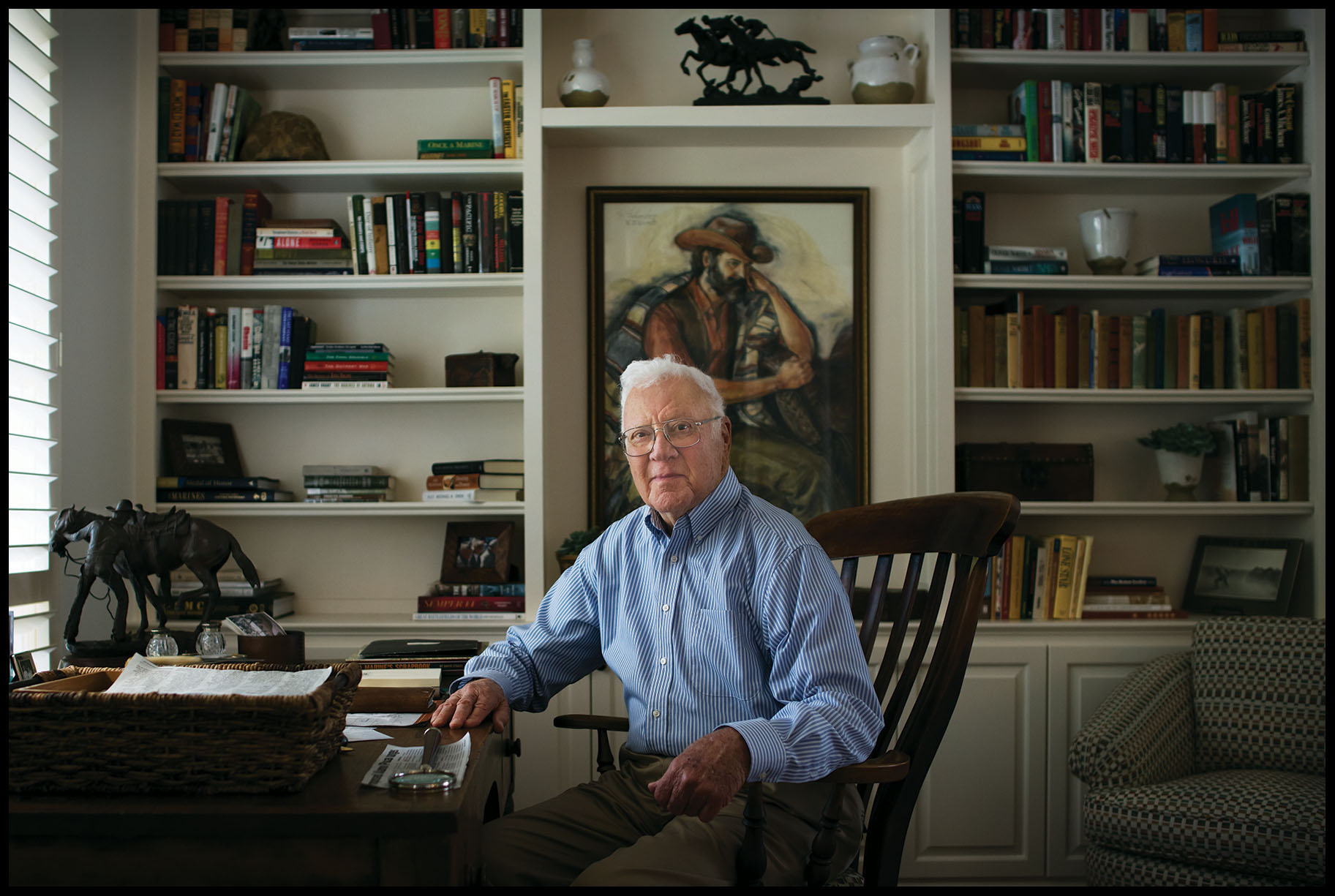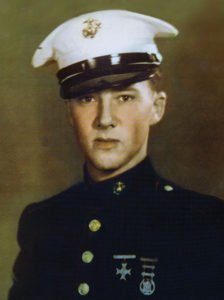
David Straus
Platoon Commander
on Okinawa
David Straus
Captain, USMC
1942-1955

Pvt. David Straus,
Honolulu, HI, 1945
On Okinawa: Two of the ridges we took were Hill 81 and Kunishi Ridge—the last line of defense for the Japanese. It was a bloody fight around the clock.
I was born in San Antonio, Texas in 1923. I went to high school at Texas Military Institute and went to college at University of San Antonio, which is now Trinity University, for a year. However, I was more interested in some pasture land up near Blanco. With the help of my parents, I leased 900 acres and a good friend and I played cowboy for the next few months. We tended cattle and Angora goats and slept under the stars.
I was persuaded by another friend to go to Dartmouth for a year and was there when Pearl Harbor was bombed. I came back to Texas A&M for one semester, knowing I was going to enlist. I worked for my dad in the family business, Straus-Frank Company, in the tire retreading shop. It was hot, grueling work. One day I’d had enough and took some time off over lunch to go to the enlistment office.
I enlisted in the Marine Corps in 1943, and I attended advanced radar school which helped me move up in the ranks. I was a staff sergeant when I left there. I went to officer candidate school in 1944 and graduated as a second lieutenant, which was a temporary commission. I then attended infantry school for a few weeks. I went overseas in early 1945, and was assigned to the First Marine Division in the Pacific.
I went to Okinawa as a replacement at the end of May. I was given command of the Third Platoon, a rifle platoon. I was there for about a month and it was combat every day. Two of the ridges we took toward the end of the campaign were Hill 81 and Kunishi Ridge. Kunishi Ridge was the last line of defense for the Japanese. It was a bloody fight around the clock.
The First Marine Division was ordered to North China to accept the surrender of the Kwantung Army the Japanese had in China. We had no trouble disarming the Japanese, but we did have a little trouble with the communist Chinese. I always say I’m a veteran of 2 1/2 wars—WWII, Korea and the half war was the Chinese Civil War.
I came home from China in 1946 and went on the inactive reserve list. I was sworn back into the reserves as a second lieutenant and was recalled to the Korean War as a first lieutenant. I got married in 1950 just before the war started, and was recalled in 1951 when my first son was six months old. I became executive officer of F Company, Fifth Marines and was the assistant to the company commander.
When we went up into the lines in 1952, we were assigned to The Hook, which was a strategic hill for an invasion route to Seoul by the Chinese and North Koreans. I was on the front line for two months. We had a full complement of seven officers and I was the only officer that wasn’t killed or wounded. I received the Bronze Star for helping bring back casualties from a patrol that came under heavy mortar and machine gun fire. We made several trips to bring them back under heavy fire ourselves. I came home in March or April, 1953. I stayed in the reserves for another year and then resigned.
When I got home, I went back into the family business. I served on the Riverwalk Commission in San Antonio for 30 years. We developed it commercially to help create the area as we know it today. {02-05-2016 • San Antonio, TX}